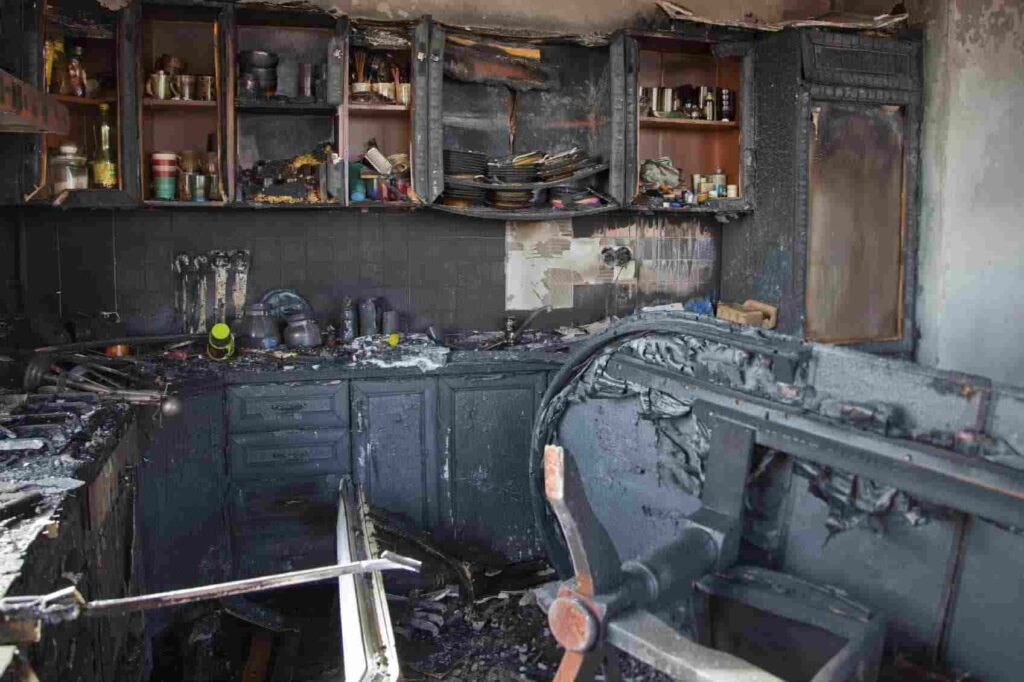Blogs
Adapting to Climate Change: Reconstruction Strategies for Plano Homes

In the face of escalating climate change impacts, the city of Plano recognizes the imperative to fortify its residential infrastructure. “Adapting to Climate Change: Reconstruction Strategies for Plano Homes” delves into innovative approaches aimed at enhancing the resilience of homes within the community. This comprehensive guide Instensa Dry navigates the challenges posed by extreme weather events, offering insights into sustainable construction, energy-efficient technologies, and strategic design principles. As Plano strives to safeguard its residents from the evolving climate landscape, this resource serves as a blueprint for homeowners seeking to fortify their dwellings against the unpredictable forces of nature, fostering a more robust and climate-resilient community.

Understanding Climate Change Risks in Plano
In comprehending the climate change risks specific to Plano, it is essential to recognize the region’s susceptibility to a spectrum of environmental challenges. Rising temperatures, increased frequency of extreme weather events, and shifting precipitation patterns pose significant threats to the community. Plano faces the risk of more intense heatwaves, potential flooding, and disruptions to its ecosystems. Understanding these risks serves as the foundation for implementing effective adaptation strategies. By assessing the local climate vulnerabilities, residents and policymakers can make informed decisions to enhance the resilience of homes, infrastructure, and overall community well-being in the face of a changing climate.
Assessing Vulnerabilities in Residential Structures
Systematically evaluating vulnerabilities in residential structures is imperative for effective climate adaptation in Plano. Factors such as building materials, construction methods, and geographical location contribute to susceptibility. A comprehensive assessment considers the potential impact of extreme weather events like hurricanes, floods, and heatwaves. Vulnerabilities may include inadequate insulation, susceptibility to water damage, and insufficient structural reinforcement. Analyzing these aspects enables homeowners and policymakers to prioritize retrofitting efforts, incorporating resilient design features and implementing targeted improvements. By understanding and addressing vulnerabilities proactively, Plano can fortify its homes against climate-related challenges, fostering a more resilient and secure living environment for its residents.
Sustainable Construction Materials and Practices
Embracing sustainable construction materials and practices is pivotal in mitigating the environmental impact of residential structures in Plano. Opting for eco-friendly materials, such as recycled steel, bamboo, or reclaimed wood, reduces the carbon footprint of construction. Additionally, incorporating energy-efficient designs, such as passive solar heating and natural ventilation, enhances a home’s sustainability. Implementing green roofs and permeable paving mitigates stormwater runoff, contributing to a more resilient urban landscape. By prioritizing these sustainable approaches, Plano can not only reduce resource depletion but also create homes that are more energy-efficient and environmentally responsible, aligning with the city’s commitment to a greener and more resilient future.
Energy-Efficient Home Design Principles
Energy-efficient home design principles are essential in crafting sustainable and resilient residences in Plano. Integrating passive design elements, such as strategic window placement for optimal natural lighting and thermal mass utilization, minimizes the need for artificial heating and cooling. Employing advanced insulation materials, high-efficiency HVAC systems, and smart home technologies further reduces energy consumption. Utilizing renewable energy sources, such as solar panels, contributes to a more sustainable power supply. These principles not only lower utility costs for homeowners but also decrease the overall environmental impact of residential energy use. In embracing energy efficiency, Plano can create homes that harmonize with the environment while ensuring long-term resilience.
Integrating Green Technologies for Climate Resilience
Integrating green technologies is paramount for bolstering climate resilience in Plano’s homes. This involves adopting cutting-edge solutions like solar panels, wind turbines, and energy storage systems to reduce dependence on traditional energy sources. Smart home technologies, including energy-efficient appliances and automated climate control, enhance adaptive capabilities. Additionally, the incorporation of green infrastructure, such as living roofs and permeable surfaces, aids in stormwater management and temperature regulation. By harnessing these innovative technologies, Plano not only strengthens its homes against climate-related challenges but also contributes to a sustainable and environmentally conscious community, positioning itself at the forefront of resilient, technology-driven urban development.
Smart Home Solutions for Adaptive Living
Smart home solutions play a pivotal role in fostering adaptive living in Plano’s residences. By seamlessly integrating Internet of Things (IoT) devices and automation, homeowners can optimize energy use, enhance security, and monitor environmental conditions. Intelligent climate control systems, automated lighting, and sensor-based appliances not only improve efficiency but also contribute to overall comfort. The integration of smart sensors for early detection of potential hazards like leaks or fluctuations in temperature further enhances adaptive capabilities. Plano residents, through these cutting-edge solutions, can proactively respond to changing environmental conditions, ensuring a connected, efficient, and adaptive living environment in the face of evolving climate challenges.
Landscape Design for Flood Mitigation
Landscape design emerges as a vital strategy for flood mitigation in Plano, where the risk of inundation necessitates innovative approaches. Implementing permeable surfaces, rain gardens, and strategically placed green infrastructure helps absorb excess water, reducing surface runoff. Utilizing native plants with deep root systems reinforces soil stability and prevents erosion during heavy rainfall. Additionally, creating swales and retention basins enhances water storage capacity. Collaborating with natural topography, these landscape interventions not only mitigate flooding risks but also contribute to the overall ecological health of the community. Plano’s commitment to flood-resilient landscaping ensures a harmonious coexistence with its natural surroundings.
Community Engagement and Disaster Preparedness
Community engagement is paramount in Plano’s disaster preparedness efforts, fostering a collective approach to resilience. Through proactive initiatives, such as community workshops, drills, and information campaigns, residents become active participants in understanding and preparing for potential disasters. Establishing neighborhood networks for communication and support enhances the community’s capacity to respond effectively in times of crisis. Collaborative emergency planning, including evacuation routes and shelter locations, ensures a coordinated response. By prioritizing
Insurance Strategies for Climate-Resilient Homes
Implementing insurance strategies tailored for climate-resilient homes is essential in Plano’s proactive approach to climate change. Homeowners can explore policies that specifically address climate-related risks, ensuring comprehensive coverage for potential damages from extreme weather events. Incentivizing resilient construction practices and the installation of protective measures, such as storm-resistant windows and reinforced structures, can lead to reduced insurance premiums. Collaborations between insurers and local authorities facilitate the development of policies reflecting the evolving climate landscape. By aligning insurance strategies with climate resilience, Plano empowers homeowners to safeguard their investments and communities, fostering a proactive and adaptive response to the challenges posed by a changing climate.
Professional Help
Seeking professional help is crucial in implementing effective climate adaptation strategies for Plano homes. Engaging architects, engineers, and construction experts with expertise in sustainable and resilient design ensures that homes are fortified against climate-related risks. Energy consultants can guide the integration of green technologies, optimizing efficiency. Collaborating with landscape architects aids in developing flood-resistant outdoor spaces. Additionally, insurance professionals provide tailored coverage, aligning with the specific climate challenges in the region. The collective knowledge of these professionals contributes to a holistic and informed approach, enabling Plano residents to navigate the complexities of climate adaptation with confidence and resilience.
FAQs:
What are the 4 adaptation strategies for climate change?
Four adaptation strategies for climate change include sustainable construction practices, green technologies, resilient infrastructure development, and community engagement.
What are strategies followed by local households to adapt to climate change?
Local households adapt to climate change through water conservation measures, energy-efficient practices, emergency preparedness, and participation in community resilience initiatives.
How can we adapt our home to climate change?
Adapting homes to climate change involves implementing energy-efficient technologies, utilizing sustainable construction materials, enhancing insulation, and incorporating resilient landscaping practices.
What methods can be used to adapt to changing climate?
Methods to adapt to changing climate encompass promoting sustainable agriculture, implementing water management strategies, enhancing disaster preparedness, and incorporating green infrastructure in urban planning.
Conclusion
In conclusion, Plano stands at the forefront of climate resilience through a comprehensive approach to home reconstruction. By understanding local climate risks and vulnerabilities, embracing sustainable construction materials, and integrating innovative technologies, the community paves the way for adaptive living. Landscape design strategies and community engagement further fortify the city against the impacts of climate change. In tandem, insurance solutions tailored to climate resilience provide a safety net for homeowners. Through collaboration with skilled professionals, Plano positions itself as a leader in climate-adaptive urban development, fostering a resilient and sustainable future where homes are not just shelters but robust sanctuaries against the uncertainties of a changing climate.

